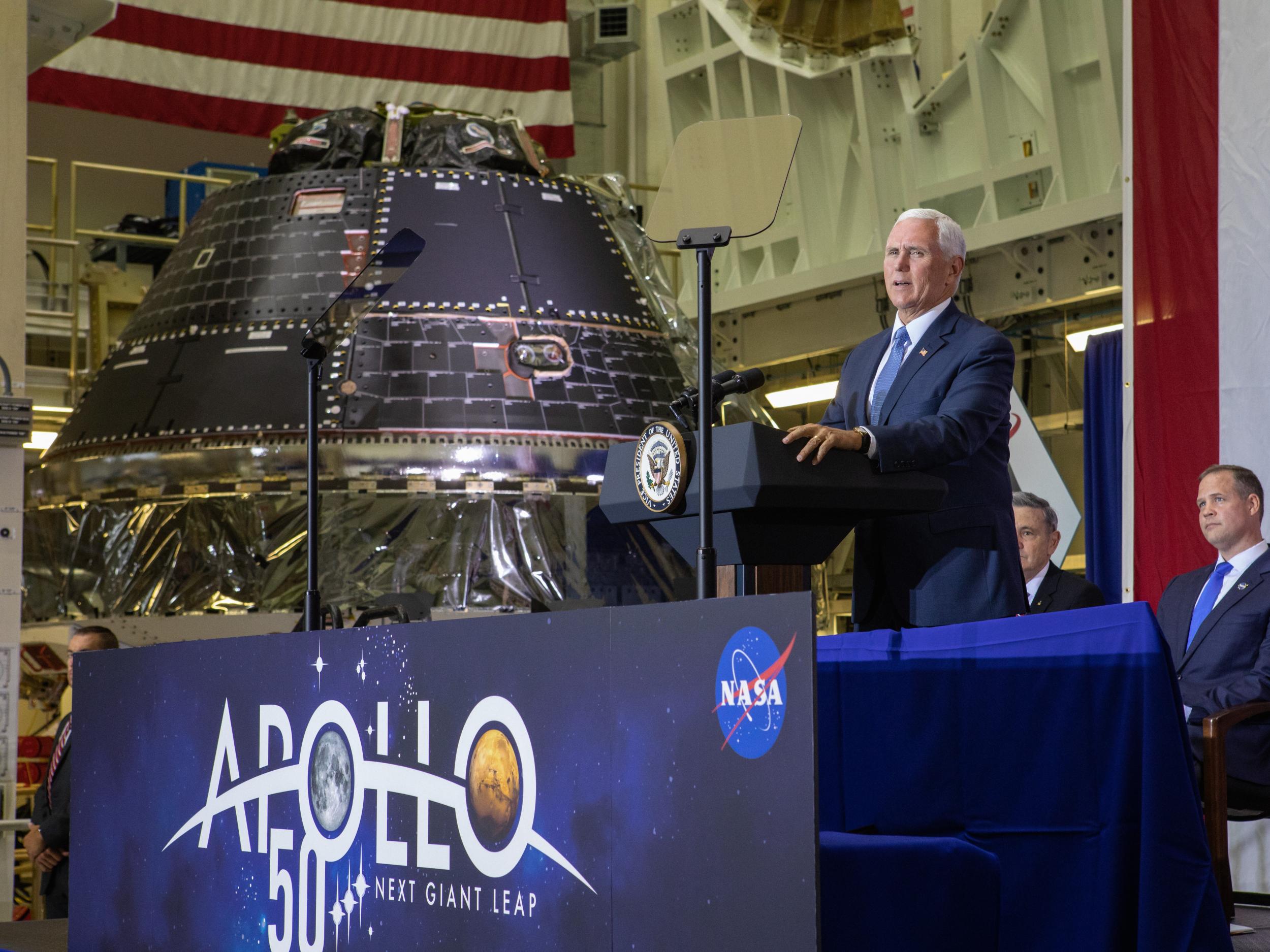Crew capsule designed to take US astronauts back to moon completed
‘Similar to the 1960s, we too have an opportunity to take a giant leap forward for all of humanity’

Your support helps us to tell the story
From reproductive rights to climate change to Big Tech, The Independent is on the ground when the story is developing. Whether it's investigating the financials of Elon Musk's pro-Trump PAC or producing our latest documentary, 'The A Word', which shines a light on the American women fighting for reproductive rights, we know how important it is to parse out the facts from the messaging.
At such a critical moment in US history, we need reporters on the ground. Your donation allows us to keep sending journalists to speak to both sides of the story.
The Independent is trusted by Americans across the entire political spectrum. And unlike many other quality news outlets, we choose not to lock Americans out of our reporting and analysis with paywalls. We believe quality journalism should be available to everyone, paid for by those who can afford it.
Your support makes all the difference.A space capsule designed to carry US astronauts back to the moon in five years’ time is ready, vice-president Mike Pence has revealed on the 50th anniversary of the historic Apollo 11 landing.
NASA’s new Artemis lunar operation is aimed at returning humans to Earth's satellite, following in the footsteps of Neil Armstrong and Buzz Aldrin in 1969 – but this time to set up camp, rather than just pay a flying visit.
The new mission, scheduled for 2024, is itself designed as a springboard for a subsequent crewed spaceship to be sent to Mars for the first time.
NASA said in a statement that Artemis 1 would launch its Orion spacecraft and Space Launch System (SLS) rocket around the moon in an initial test phase, after which a crew containing at least one female astronaut would touch down on the surface to establish a lunar base.
“Thanks to the hard work of the men and women of NASA, and of American industry, the Orion crew vehicle for the Artemis 1 mission is complete and ready to begin preparations for its historic first flight,” Vice-President Pence told the agency’s Kennedy Space Center in Florida.
NASA administrator Jim Bridenstine, standing alongside Mr Pence with Aldrin and Armstrong’s son Rick, said: “Similar to the 1960s, we too have an opportunity to take a giant leap forward for all of humanity.
“NASA is calling this the Artemis program in honour of Apollo’s twin sister in Greek mythology, the goddess of the moon. And we are well on our way to getting this done.”
A module manufactured by Airbus in Bremen, Germany, that will power Orion during the mission, is in the process of being attached ready for a September flight to test its spaceworthiness.
Mr Pence announced in March that NASA should return astronauts to the moon by 2024, halving the agency’s previous deadline to get there by 2028, and requested an extra $1.6bn funding from Congress.
However, President Donald Trump on Friday indicated he was not interested in a mission going back to the moon.
Mr Trump instead repeated his interest in a NASA mission that would take astronauts directly to Mars, a vastly more challenging and costly endeavour.
“To get to Mars, you have to land on the moon, they say. Any way of going directly without landing on the moon? Is that a possibility?” the president asked Mr Bridenstine during an event in the Oval Office.
Mr Bridenstine responded: ”Well, we need to use the moon as a proving ground, because when we go to Mars, we’re going to have to be there for a long period of time, so we need to learn how to live and work on another world.”
The Artemis program’s objective is to conduct a series of manned and unmanned missions to the moon, using its surface as a proving ground for technologies that could lay the groundwork for the longer and more complex missions to Mars as soon as 2033, Mr Bridenstine has said.
Agencies contributed to this report
Join our commenting forum
Join thought-provoking conversations, follow other Independent readers and see their replies
77Comments